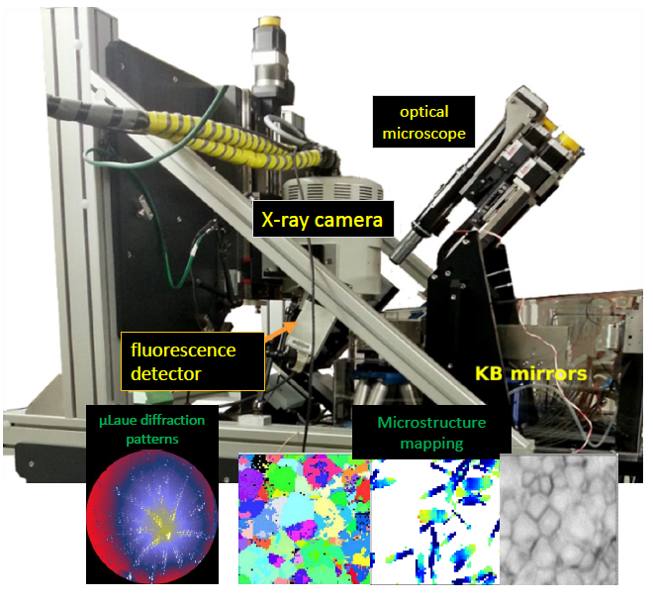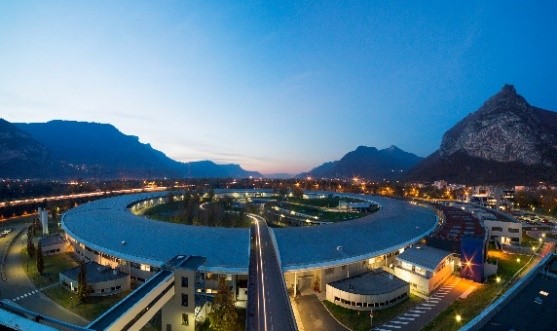Laue microdiffraction at ESRF
Description
On the CRG-IF BM32 beamline, the LaueMAX instrument enables crystallographic structural parameters (orientation & lattice parameters) to be determined down to a few hundred nanometers. The technique used is spatially resolved white-beam X-ray diffraction (Laue diffraction, polychromatic). Routinely, Laue microdiffraction produces 2D maps of micro and nanostructures (polycrystals, single crystals, isolated or assembled crystals). Complementary measurements provide local stress and/or 3D mapping. In situ or operando measurements can be carried out. All types of materials can be measured: semiconductors, oxides, metals, etc. (provided they are crystallized) for fundamental or applied studies. Extensive crystalline defects (dislocations, sub-grains) can be localized for study.
In general, Laue diffraction is an imaging technique similar to laboratory EBSD (electron backscatter diffraction), sensitive to deep crystals, with high angular resolution (10-4 rad) enabling metrology of crystal planes. It’s easy to use, requiring no special surface preparation, and can still provide information in highly deformed materials (plastic damage). Structural mapping can be combined with chemical mapping using X-ray fluorescence.
Location
ESRF, beamline BM32 CRG-IF
Contacts
Platform manager: Jean-Sébastien MICHA
Associated targeted project coordinators: Etienne BUSTARRET, Nathalie BOUDET
Technical characteristics
- Source: Bending magnet
- Beam characteristics on sample: 200×200 nm2 (FWHM), energy bandwidth (5-23 keV), crystallized volume sensitivity < 200x200x200 nm³
- Acquisition time: <1 frame/sec
- Detector: 2D sCMOS detectors from 4 to 9 Mpixels
- Automated data processing using notebooks and graphical interfaces

The 2D X-ray detector records diffraction patterns (Laue diagrams) at every point on the sample to map the microstructure (orientation, mesh parameters & deformation). In parallel, chemical (fluorescence) and optical mapping can be performed.
Associated targeted project
